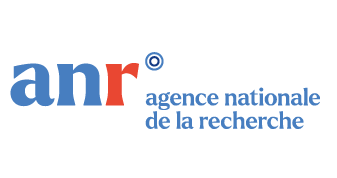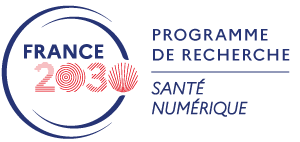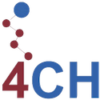LIFAT Projects
In progress main projects
(Not up to date - Sorry)
- 2023 - 2027 OLOCAP : Short Food Supply Chain LogisticANR PRC - Partners : Grenoble (CERAG), Tours (VALLOREM et LIFAT) et Troyes (LIST3N).
- 2023 - 2027 OptiHSoins : More humane optimization of the schedules of health care institutionsANR PRC - Partners : Angers (GRANEM et LARIS), Nantes (LS2N et SSG) et Tours (LIFAT).
- 2023 - 2027 SAFEPAW : Societal assets for E-healthcare patient pathwaysPEPR Santé Numérique - Partners : ARENES, Centre Borolli, Centre INRIA Lyon, CERSA, CES, IRIS, LIFAT, LIMOS, LPNC et SESSTIM.
- 2024 - 2026 OLMESCAP : Optimization and satisfaction measurement for a local food logistics platformRegion Centre-Val de Loire - Partners : LIFAT, VALLOREM et Plateforme Manger Bio Centre-Val de Loire.
- 2024 - 2027 - IntForOut ProjectIn the context of providing sustainable solutions for goals “Life on land” (#15), “Climate action” (#13), and “Sustainable tourism” (target 8.9) and especially on measuring human pressures exerted on ecosystems, the aim of the IntForOut project is to develop new methods and tools to build spatio-temporal data repositories integrating heterogeneous data from multiple spatial data sources: national, regional and local authorities, research and citizens communities. The multisource integration will allow sharing knowledge, which, in turn, will improve ecosystems monitoring over large spatial and temporal scales. The project will propose an approach based on knowledge engineering methods (knowledge graph) to elicit, represent and provide required expertise during the integration process and for stakeholders managing ecosystems. The integration process will be based on multi-scale data matching, quality assessment, semantic enhancement, as well as metadata description. An open knowledge graph and repositories for ecosystem monitoring will be available into a modulable open platform. To validate the added-value of integrating citizen science and public open data, the project implements two complementary use cases: (1) Monitoring Human disturbance on mountain wildlife and (2) Monitoring Ecosystems and compute resilient routes in a highly visited natural area. Finally, from a societal point of view, the project has the ambition to initiate a virtuous circle whereby citizens may be more involved in and more aware of the need for citizens communities and conservation, when shown the added value of the data they are collecting.
- 2022 - 2025 - AAC4ALL ProjectIl existe un grand nombre de maladies (paralysie cérébrale, syndrome d’enfermement, maladie de Parkinson, maladie de Charcot ou autres maladies neurodégénératives, syndrome de Rett et maladies génétiques comparables, etc…) qui empêchent les personnes de pouvoir communiquer oralement ou par écrit. La Communication Améliorée et Alternative (CAA) communication palliative, regroupe les aides techniques qui améliorent ou remplacent la communication oral ou écrite chez ces personnes. Un système de communication palliative comprend souvent un clavier affiché sur un écran, un dispositif de commande du clavier adapté à la personne. Il peut également intégrer une synthèse vocale si cela est nécessaire. Ces systèmes peuvent améliorer les capacités de communication. Cependant, il est important que l’aide technique qui est proposée par les médecins (ergothérapeutes, orthophonistes) soit adaptée à la personne et à ses besoins.
- 2022 - 2025 - ECHOES ProjectECHOES is a €24 million Horizon Europe Project (2024-2029). It's mission is to set up the European Collaborative Cloud for Cultural Heritage (ECCCH), a shared platform designed to facilitate collaboration among heritage professionals and researchers, providing them access to data, scientific resources, training, and advenced digital tools tailored to suit their needs.The ECCCH initiative will consist of some 20 (2-5)€ million European Projects that will do their part to ECCCH in a coordinate way. Part of this coordination will be taken in charge by ECHOES.There are 51 partners involved in ECHOES from 15 countries, including 15 umbrella organizations, for instance museum associations, and these umbrella organizations represent more than 1 000 actual organizations, representing the very vast variety of disciplines involved in the cultural heritage field. ECHOES is led by CNRS, together with FSP and CNR. Its leader is Xavier Rodier, director of MSH Val de Loire. Béatrice Markhoff (UMR CITERES LAT) is the PI for the University of Tours' contributions to ECHOES.BdTln's contributions to ECHOES consist in devising machine learning solutions to support knowledge graphs discovery, exploration and exploitation.
- 2022 - 2026 - JUNON ProjectThe JUNON project is structured around the regional environmental and digital scientific communities (BRGM, CNRS, INRAE, the Universities of Tours and Orléans, etc.) to develop a centre of research and excellence specialising in the creation and exploitation of environmental digital twins focused on the sustainable management of natural resources (water, soil and air).
- 2021-2024 - 4CH H2020 ProjectThe 4CH Project - Competence Centre on the Conservation of Cultural Heritage - 4CH is a Horizon 2020 project funded by the European Commission under Grant Agreement n.101004468
- 2022 - 2024 - Help ProjectExplicabilité et interprétabilité bout-en-bout des pipelines de machine learning. Explication des modèles d'intelligence artificielle et des composants centrés sur les données. Cette action est à la croisée de différentes thématiques dont l’apprentissage automatique, la fouille de données, mais aussi l’argumentation et l’interaction utilisateur du fait de la représentation d’une explication en tant qu’échange utilisateur / système (notion de “co-construction”), et enfin de traçabilité de l’information, en voyant l’explicabilité comme une certification des composants d’une chaîne de traitement.
- 2019 - 2023 - Ariadneplus H2020 ProjectARIADNEplus - A data infrastructure serving the archaeological community worldwide - ARIADNEplus is a Horizon 2020 project funded by the European Commission under Grant Agreement n. 823914






